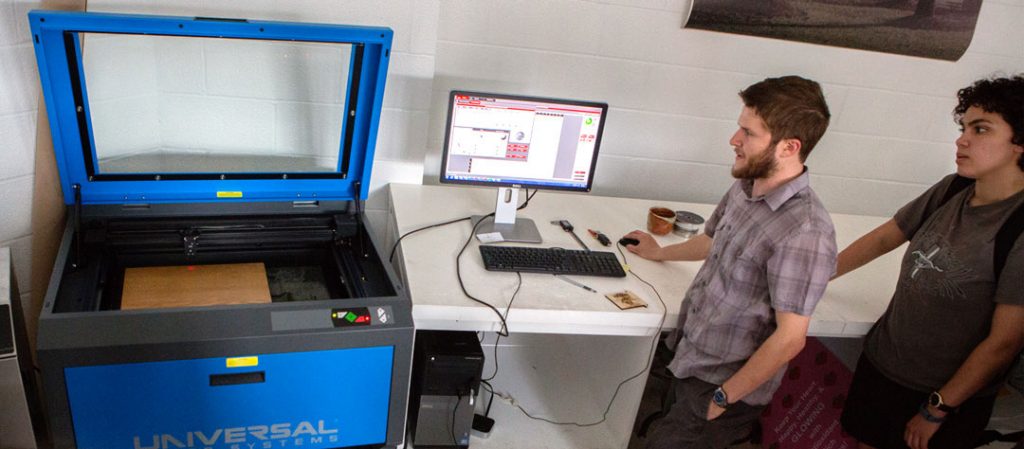
From the minute you stepped onto Binghamton University’s campus, you’ve seen the work that the Visual Media Center produces — whether it’s signs advertising the Fleishman Center for Career and Professional Development or prototypes for engineering students’ projects, this center has had a hand in creative projects nearly everywhere at BU. The machinery and knowledge of the techniques that go into creating those signs, prototypes and projects sit quietly in the basement of the Fine Arts Building. Marcus Newton, the University’s photography studio specialist and digital media technician, manages the inquiries about the Center, coordinates the scheduling for use of the Center and its facilities and offers instruction in using the machines.
“Visual media arts is anything content-driven that’s visual-based,” Newton said. “As far as this studio — it’s just a home for facilitating that. I like to think of it as a collaboration space for art students because there’s so many different tools here for all different concentrations. If a student has a self-directed assignment, they come down here because it’s very accessible [and] because there’s a lot of things at their disposal.”
The Visual Media Center is home to a large-format digital ultraviolet printer, a laser cutter, a photography studio and an alternative, or historic, printing darkroom. These resources facilitate the creation of students’ studio art class projects and commercial requests for signs, like many of those that advertise events and offices around campus.
The Center has seen changes over the past few years, beginning as a strictly commercialized printing center for BU. Since then, it’s become a hub for students to hone their creativity through the unique opportunity of learning how to use commercial-grade equipment. With its mix of historic and modern technologies, the Visual Media Center exemplifies the changes in the way visual media is produced.
“[The] laser cutter here is used for design, self-directed assignments or mixed-media classes,” Newton said. “The printer is [also] really unique in that it can print not only on paper, [but] it can print on rigid material, like windows and glass, [too]. So that’s pretty unique for this printer. There’s some mixed-media students coming in to print on canvas and fabric [too].”
The Center is partnered with the University’s Copy Center, fielding any major print jobs they need done for students, departments or events. This means that the space must be designed to work for both student and commercial use, which is sometimes a challenge, according to Newton.
“The facilities, they are for our classes, [but] the resources like the inkjet lab and the laser cutter, anybody in the school has access to,” he said. “The printer is used more experimentally by the students, but more practically by the school. It’s kind of like a space where the school has access to, but it’s [mainly] designed for the students.”
The creation of promotional materials is the most visible evidence of the Center’s use, but the priority is still the students. Newton is well-suited to support this, as he holds a faculty position in the art and design department. In addition to mentoring an intern each semester, he also offers instruction in the facility and assists students across disciplines. Students can use the advanced inkjet printers and laser cutter to make prototypes for engineering projects, the theatre department takes their headshots in the Center’s photography studio, and, of course, students in art classes utilize the center for their studio art class projects.
“The fun thing is the technology is new, but the change is not,” Newton said. “Technology has always changed, whether it’s from historical print processes to new print processes, there’s always a practical function for [the technology]. There’s always artists that take it in new and exciting ways … we hope that our students are to think of new ways and functions for the broad range for material access.”
The best way to learn the ins and outs of the Visual Media Center and its resources is to take a studio art class, but you can also set up an individual appointment with Newton. The classes, in particular, however, allow students to be guided through the technology available in the studio by knowledgeable instructors, while also collaborating with other students.
“Our daily duty is mainly to help students, and art design faculty when they have a show coming up,” Newton said. “[But] we keep very busy with students.”


